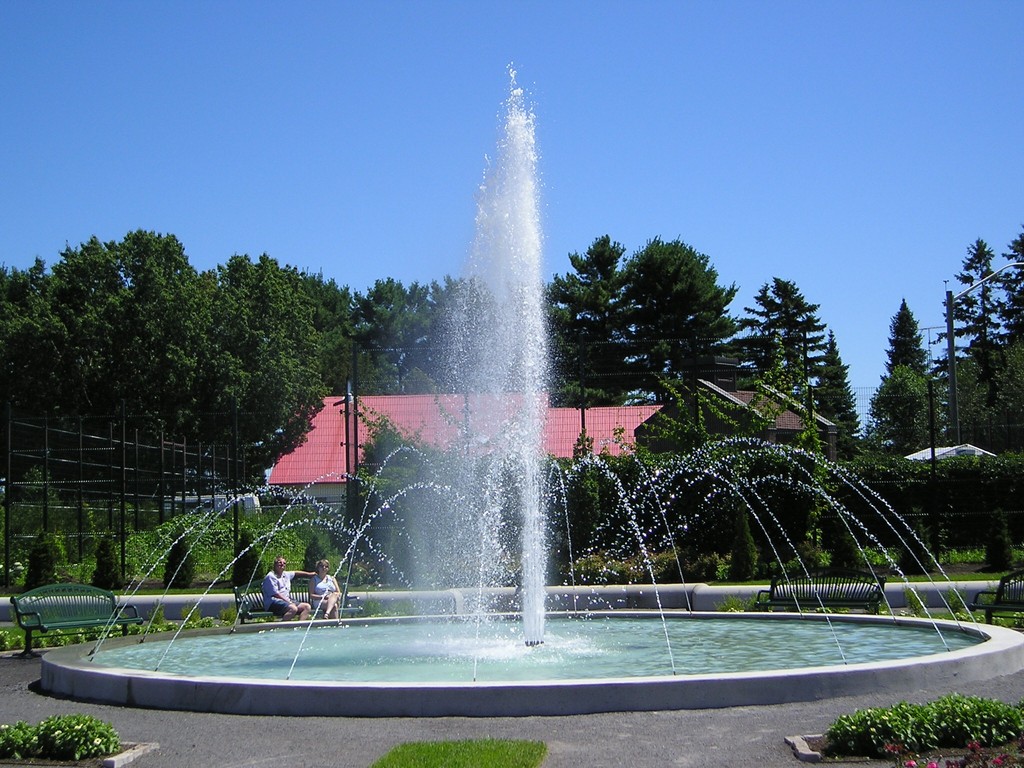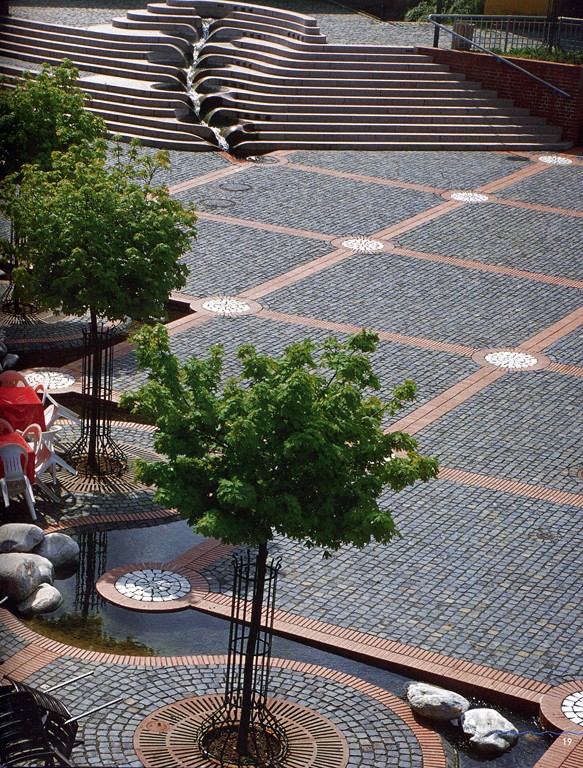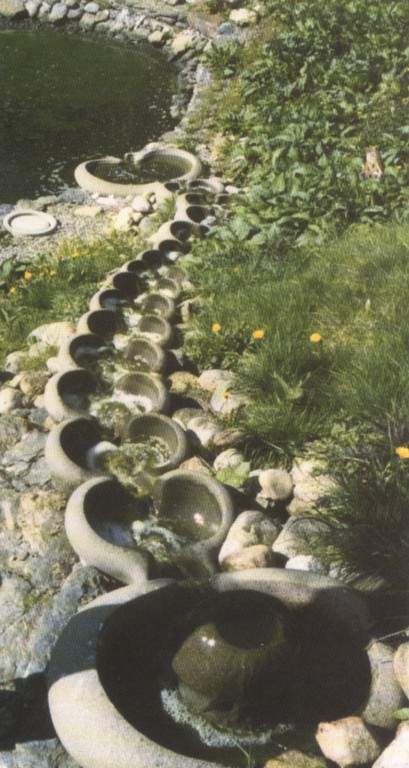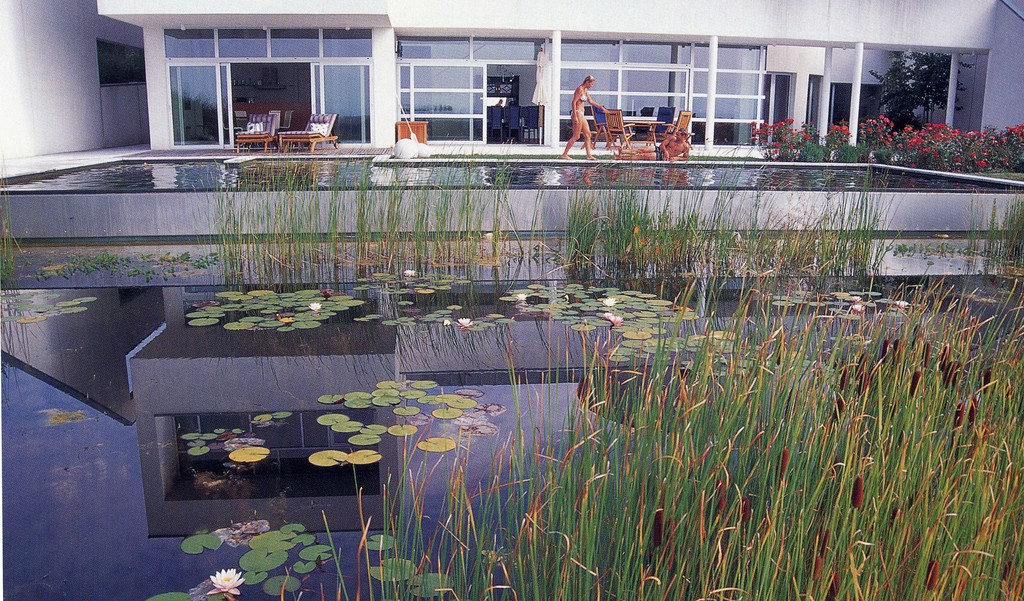Healthful Waters

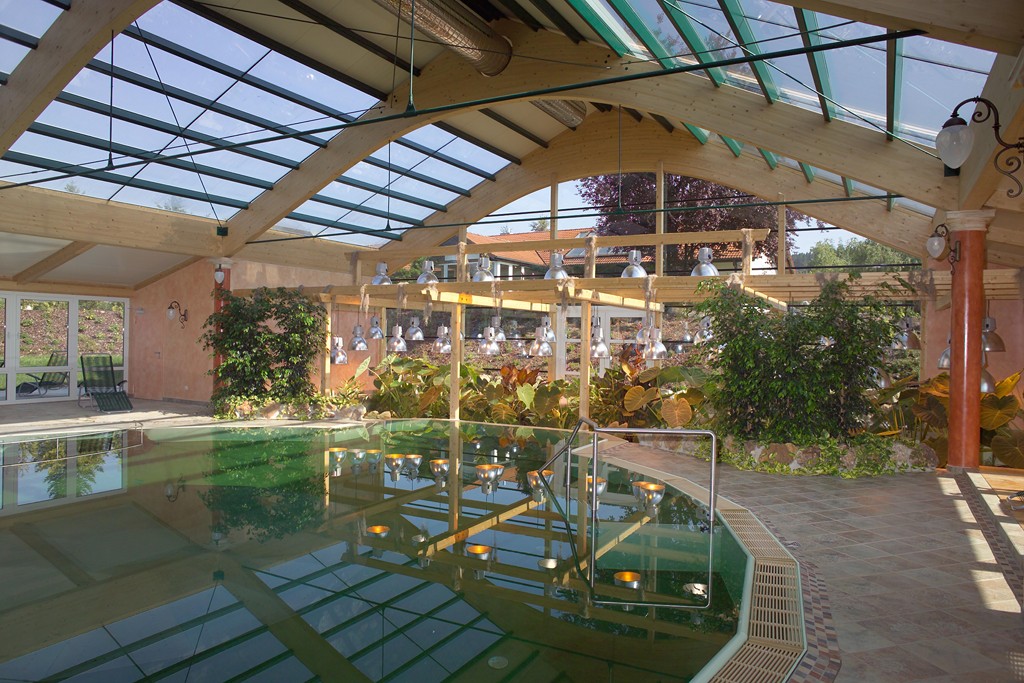
In recent centuries, watershapers have done a tremendous job of figuring out how water behaves in visual and aural terms and learned how to use those characteristics to make strong aesthetic impressions.
Now that we’re entering an era in which environmental concerns are of increasing importance, however, we’re being challenged to think differently about water, how it affects us physically and the essential role it plays in maintaining a healthy world.
That challenge is not insubstantial: As a species, we’ve done a great deal to squander water as an asset, whether by contaminating and otherwise polluting natural bodies of water or by treating pools and other watershapes with harsh chemicals. Isn’t it ironic that spas, which exist primarily so we can take advantage of their healthful benefits, are commonly sanitized with chlorine or other powerful oxidizers that may be hazardous to our health?
The plain fact is that, in trying to use water to achieve healthful or recreational ends, we have turned away from nature to make our systems work. And it’s not just spas or swimming pools: Even with decorative, purely visual waterfeatures such as fountains, we have for years turned our backs on natural processes while pursuing our aesthetic goals.
POINTS OF CRISIS
As I see it, we’ve reached a point where we should ask ourselves what we’re really doing as watershapers: Are we active in the profession simply to promote and sell products and systems, or are we working to elevate the art and craft of watershaping to benefit the world and those around us?” Of course, those two objectives go hand in hand, but for us to be truly effective in achieving the latter, I believe it’s time for us to rethink the basic concept of the “watershape” and look at what we do in a variety of nontraditional ways.
In opening this discussion, I’m aware that everything these days is being seen through the lens of tough economic times in which many watershapers have watched their incomes shrink or have had their businesses threatened. I refuse to indict our profession for what we might have done that led us to this pass, nor do I see this as some sort of cosmic retribution for past transgressions: Instead, I prefer to see the current situation as an amazing opportunity to step back and take a good, hard look at past approaches as a foundation for setting a fresh and potentially wonderful new direction.
| The first ‘watershapes’ were entirely functional – generally no more than wellheads or plumbing fixtures. In recent centuries, however, they’ve taken on far grander and more decorative forms and purposes. I’m not proposing a return to the ancient past, but what I’d like to suggest is that we should reincorporate practicality into our designs and integrate our watershapes into overall water-management programs. |
That foundation, as I see it, consists of 50 years of practice and technological progress that has inspired some watershapers to keep pushing the envelope and do great things. I also see the formation of habitual approaches and behaviors that have led others into ruts of their own devising. Either way, it’s time to consider a new path forward – a real break from the past in which we rethink watershaping and prepare ourselves for the future.
As is so often the case, however, perspectives on the future start with lessons from the past. When systems for controlling water emerged in Classical, Islamic and later European societies, for example, they began by serving in practical roles as sources of potable water for urban residents. It was only after centuries of performance as public utilities that fountains moved away from their original purpose and became more or less purely decorative.
I would argue that, in a very real sense, it’s time for the presence of water in the built environment to come full circle. No, I’m not asking anyone to think of fountains as primary suppliers of potable water; rather, what I’m after is consideration of the drinkability of that water and making certain that anyone who ingests it won’t get sick as a direct result.
That’s quite a conceptual leap, but bear with me: As I see it, our first job as today’s watershapers should be to reorient our thinking about what our systems do. Not only must watershapes be beautiful, exciting and soothing, but henceforth they must also be viewed as functional, purposeful components in grander-scale systems that reclaim water, decontaminate it and minimize the draw on potable water supplies.
And if those systems also happen to remediate existing environmental damage or contribute to the cooling of interior spaces, all the better!
INCREASED SCOPE
One of the reasons this line of thought is so compelling to me is that it defines opportunities for watershapers to sell products and help the planet in ways that increase the scope of our work.
In the traditional watershaping model, a fountain (or a pool or a spa or a pond or a stream) is essentially a stand-alone unit in which water is circulated, filtered and treated in a closed loop. As such, these features have very little (if anything at all) to do with the overall performance of adjacent buildings or spaces.
Now let’s consider the watershape as being part of a much larger system in which the water passing into the loop has been reclaimed from roofs and other impermeable surfaces, moved into storage in various cisterns or reservoirs and then treated biologically in planted pond or wetland areas. This is water that can be pulled out of the circulation loop for use in irrigation or firefighting or conditioning the air of indoor spaces or cooling of manufacturing processes, power-generating systems and other industrial processes.
It’s a wildly brave, new world in which a watershape, no matter its type, becomes much, much more than an ornament or decoration.
| The processes by which rainwater, runoff and gray water can be captured, restored and put to use are well established and are becoming increasingly familiar in conversations about watershapes. Water collected on green roofs (top row, left), for example, is filtered and aerated (middle left) and moved from collection points via runnels or cascades (middle right) that deliver it to ponds where plants take up contaminants (right) and ultimately make the water suitable for use in fountains, pools, spas and interactive displays (bottom row, both images). That might seem an oversimplification, but basic loops of this sort have been used in Europe for many years now. |
If a building has a green roof that helps insulate a building while collecting and purifying water that is stored in a hidden vessel, such a system might be entirely invisible. But if a watershaper rescues that system and, with due consideration of its utilitarian existence, uses its water to beautify the setting by making certain functional details of the system visible, then aren’t basic the aesthetic impulses of the architects and designers of these systems better served? Isn’t this possibility a fantastic plum for the building’s owner? Does this make the composition not only brilliantly functional, but also soothingly, inspirationally beautiful as well? By the very act of making key, beneficial functions visible, can’t we also make the overall systems more appealing?
As a watershaper and the lead designer at Karajaal (St.-Sauveur, Quebec, Canada), I’m excited by this notion of finding ways to bring functionality and beauty together. As I see it, this will maximize the benefits of these systems while making them far more integral to the overall design scheme.
The best thing about this is that some of the pioneering work has already been done. What may seem revolutionary to some in North America is, in fact, already widely practiced in Europe and has been part of the watershaping approach there for more than 20 years. It’s not that Europeans are more advanced or sophisticated than Americans; it’s just that natural resources and environments are so restricted by population density that designers there have already moved in this direction out of necessity.
For years, they’ve dealt with acid rain, groundwater contamination and rivers so polluted that swimming in them has been hazardous or impossible for many years. Under those constraints, system designers think differently about how they manage water, reclaim it and use it over and over again.
In Europe, in other words, necessity has forced an earlier awakening of a different kind of value system. Only recently have we in Canada and the United States needed to think along those same lines and develop approaches that deal seriously with a mandate to preserve our resources.
USING BIOLOGY
Among the lessons we can collect from the European experience is that biological treatment can indeed be used as a primary method of water purification. In North America, we have been taught that water can only be effectively treated through use of chemicals and filtration in tanks with various forms of media. As the Europeans have shown us, however, biological water treatment also works quite well, and in a natural way.
Using the biological approach, say our European watershaping counterparts, you can eliminate the use of manufactured chemicals and generation of their potentially harmful byproducts. Moreover, there’s no need to draw on the energy required to make chlorine compounds or fuel the transportation system needed to bring them on site or deal with the downstream effects of harsh chemicals on groundwater or aboveground water systems.
At this point, Europe is teeming with extreme applications of biological filtration. They process the effluent from carwashes; water discharged from nuclear power plants; cooling water from large office buildings; and even the utterly foul water that emerges from zoological exhibits – with that last providing the most extreme possible example of the challenges these systems can handle.
| Designed by Atelier Dreiseitl (Uberlingen, Germany) and built between 1989 and 1993 in the town square of Hattersheim, Germany, this system uses aerating cascades and a biofiltration system to produce safe water with no chemical support. (Photo courtesy Atelier Dreiseitl) |
To be sure, not all of these systems produce potable water, but even if the output is “gray water,” that’s still something that serves noble purposes in irrigation, firefighting and a host of other applications – and mean that we don’t need to tap supplies of potable water for those important purposes.
In addition, the European experience has shown that biological filtration using specific types of plants can help remediate contaminated water by removing heavy metals and organic compounds introduced into water supplies via the fertilizers used by agricultural or industrial operations. (This ability of plants to take up these materials is no longer supposition, but is rather a matter of empirical fact.)
Finally, and as mentioned above with some vigor, biological systems can be utterly beautiful, whether they take the form of ponds with wetland areas and planted floating islands or of green roofs that bring park-like features to urban settings.
Again, watershapes can provide all of these wonderful benefits while also being beautiful. After all, plants do the basic work of correcting the water and these systems can easily include cascades, floating aeration systems and various watershaping structures that beautify settings while helping clean the water. And it’s even reached a point where, in North America, we’re seeing plants along the edges of retention basins: What were once humdrum settings are now becoming beautiful focal points in park-like spaces accented by pathways, docks, floating fountains, floating islands and diverse varieties of wildlife.
SPECIFIC MEASURES
The big question in this discussion, of course, is “How do we do this?” How do we insert ourselves into the basic design process so thoroughly that our involvement is elemental to the success of any architectural- or landscape-design project?
One of the best ways to answer that nest of questions, I think, is to evaluate watershapes as they relate to certification under the Leadership in Energy and Environmental Design (LEED) program – the widely recognized points system administered by United States Green Building Council.
| In this project built in 1989 and 1990 for Potsdamer Square in Berlin, the designers at Atelier Dreiseitl used another approach, storing and then feeding filtered rainwater to a massive watershape composition that safely invites public participation – and does so without drawing on potable water supplies. |
Currently, there are no classifications or criteria in the LEED program referring specifically to watershape designs. There are, however, several areas in which applications may be found, mostly in the program’s extensive Water Efficiency category. Here, we learn, the idea is to reduce the use of potable water supplies – not through use of well water, but instead by capturing and treating rainwater or gray water.
According to current LEED provisions, you can capture rainwater using a green roof (which has the added virtue the instant it falls from the sky of reducing air-conditioning costs as a result of the insulating capacity of these roof structures). Once captured, the water begins a journey of purification by flowing either to a gravel-based wetlands zone/retention basin or into a body of water that contains floating islands and myriad plants that take up contaminants.
When water exits these basins, no matter its condition, it can be used immediately for irrigation, firefighting or janitorial water – even to flush toilets if those fixtures are outfitted to handle gray water. Alternatively, this water can be channeled into an “infiltration” basin where water is injected into the ground to help maintain water tables. This can be extremely helpful in areas where there are issues with seawater intrusion or underground plumes of pollution.
| Designed by A. John Wilkes and built in 1988, this ‘flowform’ cascade is part of the sewage-treatment process at a plant in Hogganvik, Norway. Along with biofiltration, floating islands and additional conventional waterfalls, this wonderfully aesthetic cascade helps prepare highly contaminated water for safe discharge into the sea. (Photo courtesy A. John Wilkes, Virbela Institute for Rhythm Research, East Sussex, England) |
Once the water is contained in such a system, it can also be polished and “cleaned up” for use in fountains or swimming pools: All you need to do is run it through a sand or cartridge filter. And you can avoid that step altogether simply by deploying plants that remove bacteria, algae and contaminating organic compounds in a filtration area large enough to render the water potable.
At the risk of repeating myself, all of this is incredibly exciting. I’ve even seen reports of LEED-points-seeking designs that involve remediation of environmentally damaged areas. Indeed, it seems that soil laden with contaminants – the junk that has heretofore been excavated, carried away and incinerated at great cost and at no net benefit to the environment because of the air pollution and energy consumption that result – can be helped by properly designed watershapes.
Biological treatment has, in fact, proved itself wonderful option here. When you channel water through bad soil and thereby flush contaminants into open bodies of water, it is then possible to select plants that will clear specific substances from the water either with plantings along the banks or on floating islands. Some plants, for instance, are particularly inclined to extract heavy metals, while others are adept at collecting fatty contaminants.
ACTIVE PARTICIPATION
In sizing up the LEED-point potential of watershapes, it’s important to recognize that the measures we implement earn credit relative to specific situations.
| This 2003 project by BioNova (Munich, Germany) uses biofiltration to treat the water in a large, heavily used indoor swimming pool at the Arterhof Wellness Center. (Photos courtesy BioNova Natural Pool, Hackettstown, N.J.) |
In using rainwater for irrigation, for example, there are precise ratios to be achieved with respect to the volume of potable water relative to the surface area from which that water is collected. Helpfully, there is no apparent favoritism: The same holds just as true for water used for industrial cooling as it does for water collected from carwashes or zoological applications.
In all cases, a design’s value with respect to points is always subject to a phalanx of variables associated with the application and the design. The key, I think, is that this system of points and relative values and the urgent need on the part of projects to gain LEED certification opens an all-new discussion of the role watershapers might play in the design of commercial complexes as well as residential developments.
| For this private residence, the designers at Wassergarten (Wels, Austria) in no way compromised on the beauty of the project in using the biofiltration provided by a large pond to purify the water of the adjacent swimming pool. (Photo courtesy Wassergarten) |
Look at it this way: Traditionally, watershapes in their more aesthetic or recreational roles are often among the last of all items considered in a project. Until recently, in fact, fountains, swimming pools, spas, ponds, cascades or interactive waterfeatures have been seen as separate and divorced from everything else on site – a half step shy of, say, a sculpture or some identifying signage.
With the philosophy I’ve been discussing here, by contrast, we as watershapers become intimately engaged in the process of designing water reclaiming and recycling programs; play a role in establishing irrigation systems; and, in fact, make ourselves an integral participant in the overall design scheme in ways far more imperative than has ever been true in the past.
In other words, we as watershapers will be included as part of initial design teams, and our work will become inseparable from a huge range of other architectural and landscape elements.
Again and in yet other words – basically because I think this message bears repeating over and over again – the role we have as watershapers is about to become greatly expanded and its importance dramatically increased. We all have a tremendous opportunity to participate in the future of our industry and our planet at an all-new level, and our business opportunities will expand vastly in the process.
It’s all good, and all we need to do to seize this bright future is to become a bit more involved in going green.
Aviram Müller is the founder of Karajaal, a water-experience company based in St.-Sauveur, Quebec, Canada, that focuses on the design and engineering of distinctly interactive aquatic venues in which water, lighting effects, fountains and pools are typically part of the package. A multifaceted artist with an extensive technical background, Müller has worked on three continents through the past 25 years. He has a passion for creating distinct, affordable and ecologically responsible experiences, with a focus on commercial centers and resorts. He is currently working on a textbook on the subject of sculpting with water that will be aimed at university students and graduates in architecture, engineering and the fine arts.
















